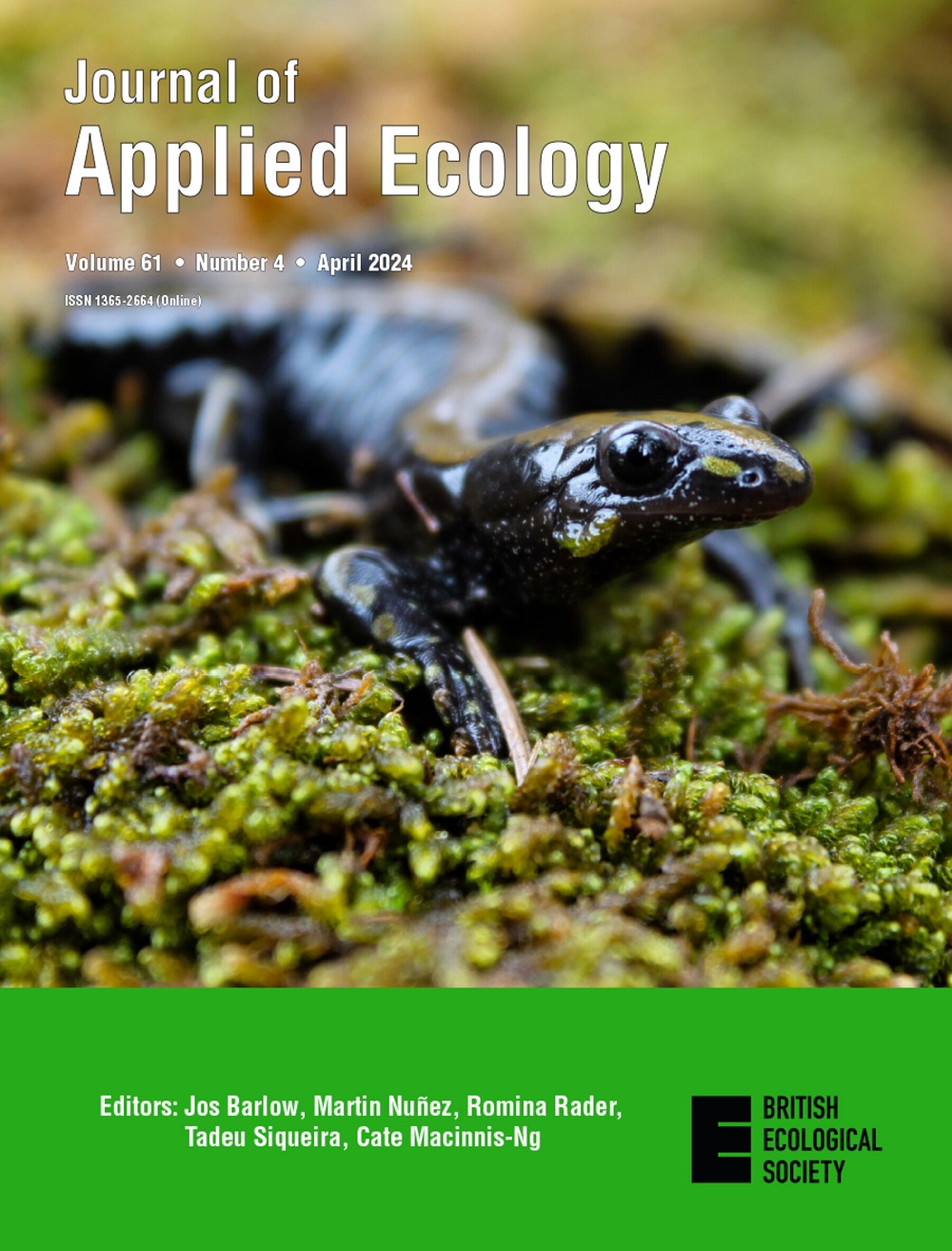Cattle exclusion increases encounters of wild herbivores in Neotropical forests
Juliana Vélez, William McShea, Budhan Pukazhenthi, Juan David Rodríguez, María Fernanda Suárez, José Manuel Torres, César Barrera, John Fieberg
下载PDF
{"title":"Cattle exclusion increases encounters of wild herbivores in Neotropical forests","authors":"Juliana Vélez, William McShea, Budhan Pukazhenthi, Juan David Rodríguez, María Fernanda Suárez, José Manuel Torres, César Barrera, John Fieberg","doi":"10.1111/1365-2664.14751","DOIUrl":null,"url":null,"abstract":"<p>\n \n </p>","PeriodicalId":15016,"journal":{"name":"Journal of Applied Ecology","volume":"61 10","pages":"2444-2454"},"PeriodicalIF":4.8000,"publicationDate":"2024-09-09","publicationTypes":"Journal Article","fieldsOfStudy":null,"isOpenAccess":false,"openAccessPdf":"https://onlinelibrary.wiley.com/doi/epdf/10.1111/1365-2664.14751","citationCount":"0","resultStr":null,"platform":"Semanticscholar","paperid":null,"PeriodicalName":"Journal of Applied Ecology","FirstCategoryId":"93","ListUrlMain":"https://besjournals.onlinelibrary.wiley.com/doi/10.1111/1365-2664.14751","RegionNum":1,"RegionCategory":"环境科学与生态学","ArticlePicture":[],"TitleCN":null,"AbstractTextCN":null,"PMCID":null,"EPubDate":"","PubModel":"","JCR":"Q1","JCRName":"BIODIVERSITY CONSERVATION","Score":null,"Total":0}
引用次数: 0
引用
批量引用
放牛增加了新热带森林中野生食草动物的遭遇次数
持续的栖息地丧失和物种灭绝要求管理者实施并量化保护生物多样性行动的有效性。在野生动物和家养动物共存的景观中,围栏如果操作得当,是一种重要的保护管理工具,有可能通过选择性地排除家养物种来提高栖息地的利用率。例如,在新热带地区的森林中设置围栏有望减少牛群对林下植被的破坏,从而将这些资源释放给本地的食草动物和果实消费者。在此,我们采用前后对照-影响设计实施了一项生态实验,以量化牛群隔离对哥伦比亚奥里诺基亚多功能景观中本地食草动物和果实消费者群落相遇概率以及地面覆盖率的影响。我们在包含对照区和围栏区(处理区)的四个森林斑块(即区块)中沿森林边缘修建了 14 公里长的野生动物防渗围栏。我们安装了 33 个相机陷阱,以获取围栏建成前后野生动物和牛群相遇概率的信息。我们使用贝叶斯广义线性混合效应模型,通过时间段(围栏建成前后)与处理(对照区或围栏区)之间的交互作用来量化围栏的效果。围栏能有效降低牛群在处理地点的相遇概率,对所研究的七种野生动物中的四种(食草动物,包括黑髭猿 [仅旱季]、低地貘 [仅旱季] 和斑蟒 [两季] 以及杂食动物南美浣熊 [仅雨季])的相对相遇概率产生了积极影响。围栏对领啄木鸟的影响是负面的,但仅限于旱季。对白唇山雀和白尾鹿的影响在统计学上不明显。综述与应用:我们提供的实验证据表明,在野生食草动物和果实消费者与牛共生的森林斑块中,围栏能有效地选择性地将牛排除在外,并提高这些物种的相遇率。我们的研究结果突显了围栏生态学在新热带森林中的重要应用,由于野生动物的体型小于牛等家畜,因此在新热带森林中实施野生动物可渗透围栏是可行的。
本文章由计算机程序翻译,如有差异,请以英文原文为准。




